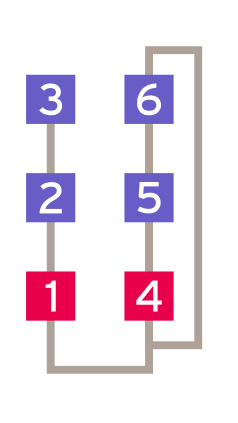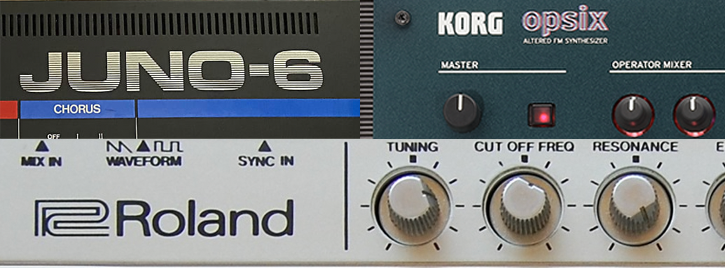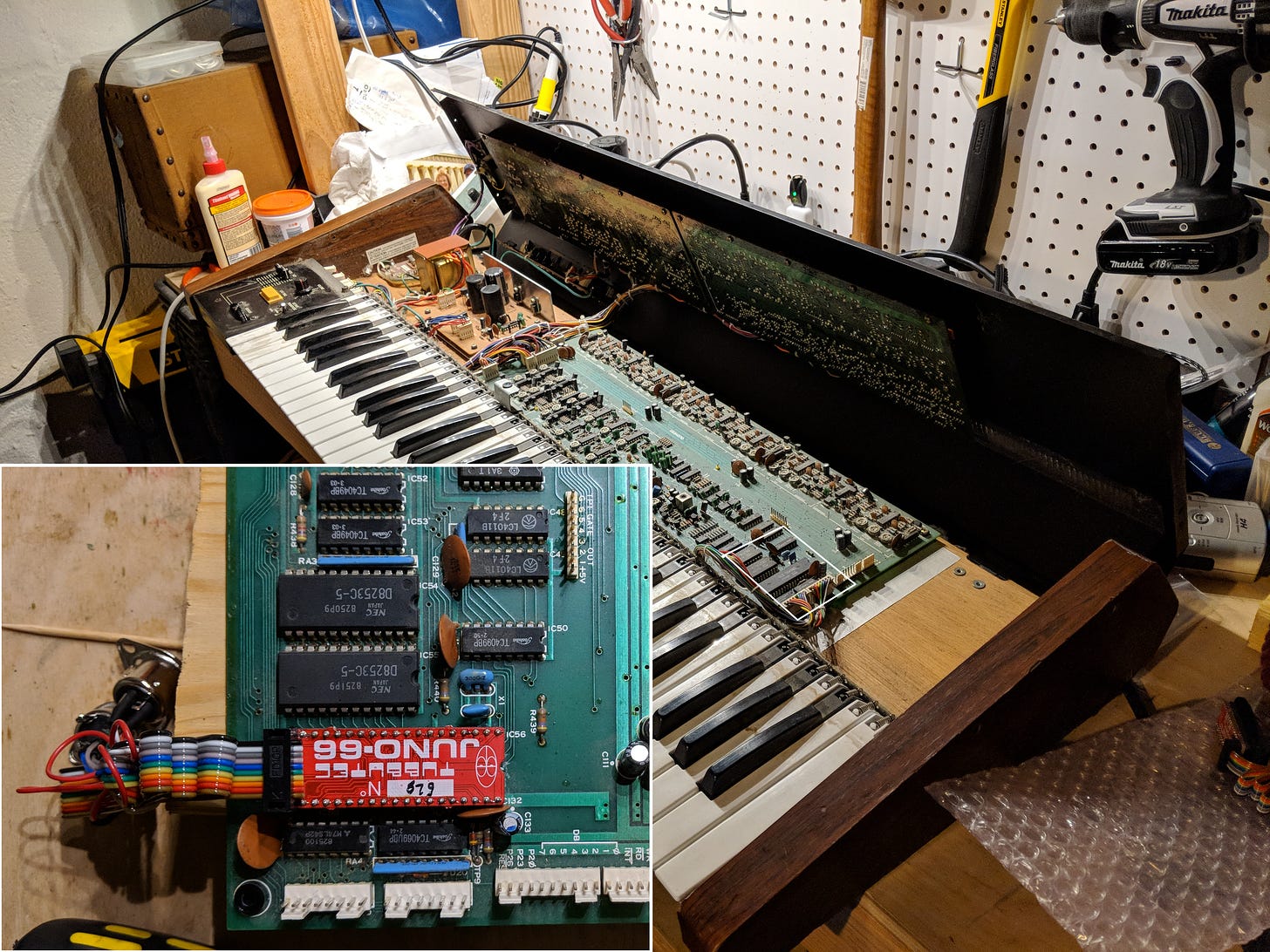Box of Maps: Crafting 303-inspired sounds with the Roland Juno-6 and Korg Opsix
Unconventional routes to 303 sounds
Exploring 303 sounds with the Opsix and Juno-6
Following up on my prior post saluting the TB-303, here I am going to explore some ways I try to pull these sounds out of the gear I use. Specifically, I am looking at the Roland Juno-6 and Korg Opsix. With the Juno-6 being a poly synth and the Opsix being FM, these two synths are not ideal candidates for the gliding TB-303 sound. It’s not what they’re known for, and they must be forced into the job. On the other hand, these synths have their own unique filters and oscillators, so it’s kind of a fun project to see if I can get a house music sound from them.
Juno-6(6)
The original Juno-6 does not have a glide sound, which probably would have been very difficult to implement in 1982 on its digital oscillator. Fortunately, Tubbutec has created a modification to the Juno-6 that adds midi and extends its features to include glide, which is full-featured, including the ability to adjust the timing of note transition. I installed it a few years ago after a long debate with myself (and a few trusted friends) about keeping the instrument original. It has overall been very worthwhile for the addition of MIDI alone, and the other features are a huge bonus.
Signal Chain
The signal flow of the Juno has some comparable components to the TB-303 (Fig 2). The sound generator is more complex in that it mixes multiple oscillators opposed to the single one available on the TB-303. There is a low pass filter that has a lot of attitude, and an envelope feature as well as ways to set the level of a few modulators (ENV, LFO, and KYBD).
Juno: Square waveform
Because of the wave shaping and polyphony features, I usually use the Juno to create pads or chord instruments. I had to resist these features to get a good monosynth sound from the Juno-6, because the sound of a waveform generated with a bunch of harmonics just didn’t have the punch of a pure mono synth. This led me down a path to use only the square or sawtooth, which turned out to be pretty fruitful. The Juno’s square waveform is really nice (as visualize below in Touch Designer with the wonderful td-scope). It doesn’t look fully square, so it has some flavor and isn’t incredibly dissimilar from the TB-303’s.
The Juno’s filter is gnarly, and you can see here when I sweep the frequency how it imparts high frequencies that create sharp edges in the sound wave.
Juno: Sawtooth
I gotta be honest, I don’t really like the way the sawtooth on the Juno sounds as a 303 stand-in. I’m sure there are good musical uses for it, but I’m leaving that for another day, because I love how the square one sounds and think there will be plenty of sonic possibilities to explore there.
Juno: Signal modulation
So now we have a basic square signal with modulation and glide and that is pretty much what I’m looking for. The glide on the 303 can be pretty fast, and it took me a bit to figure out just how fast I needed to set it on the Juno-66. Multi-octave jumps in a 16th note at 120+ beats per minute (BPM) are not uncommon with signature 303 lines (to get in the ballpark: 120 BPM→500 msec per quarter note→125 msec for a 16th note: make it fast). After bit of diving into the menus, I found some agreeable settings around using just a few milliseconds of glide. The Juno doesn’t have the ability to do the 303’s unique accent circuit that modulates the filter and envelope, but I eventually arrived at a tone that I felt like was a passable as “inspired by” the 303:
The filtered Juno tone run through distortion is nasty in the best way possible. This is run through the Third Man Hardware Triple Threat pedal with distortion and delay on. If you haven’t heard of these, they are nice budget-friendly pedals made by Donner under direction of Jack White. I won’t get off-task and gush too much about the Triple Threat here, but it’s worth acknowledging that I’ve been happier with this $100 3-pedal combo than most other combinations of 3 application-specific pedals.
Korg Opsix
The Opsix is an FM synthesizer made by Korg that I picked up in 2022 when Korg unloaded their entire stock of these synths at a price well below the MSRP and seemingly stopped making them for a bit. I’m relatively new to FM synthesis. and I started paying attention to it more after a friend spoke enthusiastically about his Korg Volca FM synth, which led me to realize that a lot of the Japanese ambient and pop music I love uses FM synthesis (e.g. Hiroshi Yoshimura’s Green or early Depeche Mode—mallets, horns). FM excels at creating mallet-like tones, plucks, and bells that aren’t easy to create with an analog synth. So again, not the most obvious choice for a 303 mono synth sound, but the Korg Opsix appears to have the requisite requirements: glide, 16-step sequencer, square / triangle wave generators, and some unique filters.
Opsix: square waveform
The Opsix is cool because it was a few different waveform generators. I was pretty immediately sold on the normal square wave as the primary sound source for this application. It’s pretty nice, but if you A/B it with the Juno above, you can hear how much harsher it is, and the waveform looks sharper.
Opsix: sawtooth waveform
Between the two sawtooth waveforms available, I felt like the SawHD looked and sounded more like a 303. Similar to the square it is harsher, but it’s nice:
Opsix: signal processing
Pulling from my experience with the Juno, I knew starting simple was going to yield better results than immediately incorporating every feature of the synth. One of the cool features of FM synthesis is that you choose how the signal generators connect (also called the algorithm). I was able to find an algorithm that had some similarities to the 303 signal chain (Fig 3). This one lets me use operator 1 and 4 as square and sawtooth waveform generators, respectively, which can then be modulated by the other operators if needed. I am not going to worry too much about modulating with 2-3 and 5-6 because that type of synthesis is not very 303 and goes against my newly found guideline of keeping the waveforms simple when emulating a 303.

Then it was on to start messing with the glide and choose a filter. Being a modern synth, the Opsix presents many options, including a Poly-6 style filter that has lots of attitude.
Finally, to chain it all together, I dove into the 3 built-in effects that in series for the output. I love using a mixture of onboard effects and outboard effects with hardware synths. Using a mixture of sources and modulators gives a wider variety of harmonic content, background noise, etc. It highlights a guideline that I often follow when making music: vary signal chains and sound sources when possible if you want a broader palette. For my 303-inspired sound, I strung together reverb, delay, and distortion, and I again arrived at a sound that is passable as being 303-inspired.
New House mates
Okay, so now we have two hardware synths doing their best to impersonate a 303. There are missing some components of the original, but I really don’t want to obsess about fully emulating the sound. If I wanted this sound exactly, I could buy a software or hardware 303 remake, because entire teams have reverse engineered this synth. This process resulted in some sounds that draw on the concepts of the 303 and could be used to make house-inspired music: two synths with glide, distinct signal chains, some knobs/slides to tweak. Throw a drum machine behind or on top of it and have some fun. If you have a synth and computer, you could use the methods here to see what those waveforms look like. Would love to see the waveforms on other synths if you give it a try.





darn, couldn't get any of the embedded videos to play, but these are two of my favorite synths. going to have to try the op-six patch you describe on the one at the Synth Library